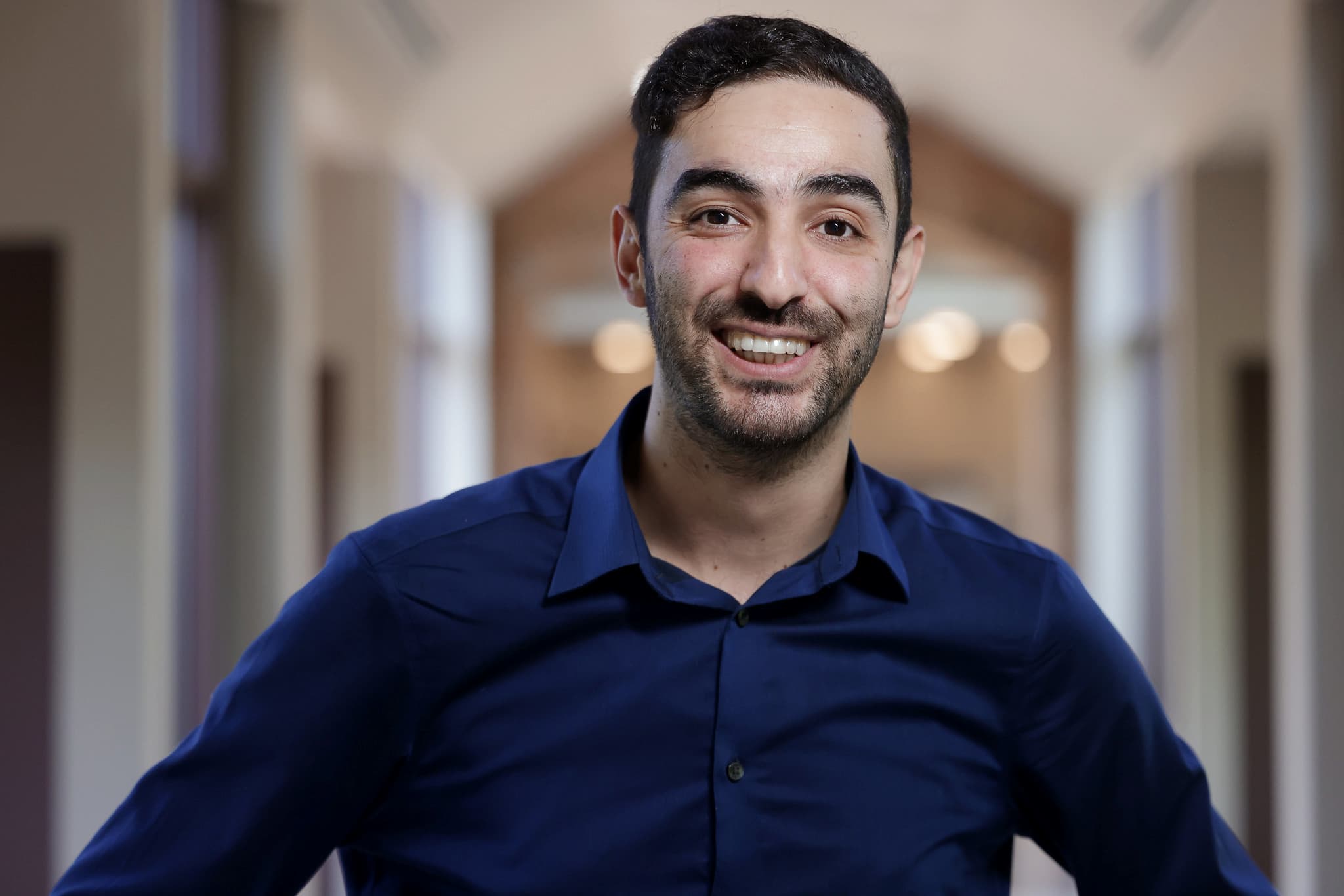
Majdi Radaideh to lead development of nuclear regulatory framework for explainable, licensable AI
The Nuclear Regulatory Commission will support this project with a $500k grant.

The Nuclear Regulatory Commission will support this project with a $500k grant.
NERS Prof. Majdi Radaideh (RAD) has secured a $500,000 grant from the Nuclear Regulatory Commission to support a collaboration with NERS Prof. Brendan Kochunas and Fort Lewis College’s Prof. Nishatul Majid. The project will advance the field of nuclear reactor design through the integration of explainable artificial intelligence and machine learning technologies.
Neural networks, the backbone of artificial intelligence and machine learning, are black-box models known for their complexity. Their opaque nature poses challenges in understanding the relationship between the model inputs and outputs, leading to a tradeoff between model interpretability and accuracy.
While traditional artificial intelligence and machine learning models such as rule-based models and decision trees offer interpretability, they often lack accuracy in complex applications. In contrast, deep learning models like neural networks excel in accuracy but lack interpretability. This project aims to bridge this gap by developing Explainable Artificial Intelligence, or XAI, methods tailored for nuclear reactor applications to ensure that artificial intelligence and machine learning model predictions are transparent and understandable to human beings, which is critical for regulatory assessments and licensing activities. The proposed regulatory framework is centered around three key pillars: standardization, communication, and the definition of a model spectrum.
“Every time I go to a new conference or workshop, I continue to be amazed at how broadly we define AI/ML in the field,” said RAD. “AI/ML could mean anything from simple rule-based and symbolic approaches all the way to hypercomplex large language models.”
Standardization involves establishing a universal framework for dataset structure, performance metrics, model training, and deployment procedures, applicable across diverse model types. Defining a model spectrum provides regulators with performance insights across various models, each with different levels of interpretability, aiding in the decision-making process regarding model selection. While some applications may suffice with simple, interpretable AI models, others may require more complex AI/ML where the tradeoff is needed. In the first senior design project led by RAD, NERS senior students developed pyMAISE: Michigan Artificial Intelligence Standard Environment, an AI/ML ecosystem designed to assess and refine a broad range of AI/ML models for the same dataset and performance metrics. pyMAISE will be leveraged in this project to enable more explainability in the models.
“Communication with the regulator and the NRC is as important as doing the technical work in my view,” said RAD. “We need to fully understand the NRC perspective about what licensable AI looks like to them and try to work toward that. We will send our graduate students to intern and interface frequently with the regulators throughout this project.”
As a Co-Principal Investigator, Kochunas will support a wide range of efforts, from data analysis and model training to software development and validation. He will be conducting development and analysis of nuclear reactor models and assisting with data preprocessing and analysis. Additionally, Kochunas will play a crucial role in leading the development of user-friendly software.
“I choose to be skeptical of AI/ML methods in applications where we have deep knowledge of our equations and physics,” said Kochunas. “I like to think this brings a healthy counterpoint to make sure that we really understand what the AI/ML technology is doing. We already have a toolbox of methods that are explainable. For AI/ML to become a tool in that toolbox it has to be explainable in a similar way. It’s a hard problem for sure, but we’re going to give it the ol’ college try.”
Nishatul Majid will bring expertise in electrical and computer engineering with a focus on artificial intelligence and machine learning. He will contribute to the methodology, software development, and potentially to educational activities at his institution. This NERS collaboration with Fort Lewis College, a minority-serving institution in Durango, Colorado, aims to promote diversity, equity, and inclusion in the nuclear and artificial intelligence and machine learning fields. Activities will include integrating nuclear and artificial intelligence and machine learning topics into educational programs, enhancing software usage experience for underrepresented Native American groups, and raising awareness about nuclear power.
“Working for about ten years in AI/ML in the nuclear field, I still see a huge gap between what the DOE AI-funded research projects yield and the NRC views on licensable AI,” said RAD. “The NRC may or may not adopt our ideas in this project after all. However, I am confident that any effort we make as a community to bridge that gap through standardizing our definition and use of AI/ML models is a win-win situation for the industry.”
“NERS is excited to see our early career faculty leading in the use of new technologies, especially in helping the safety regulator best understand the value and limitations of tools like AI,” said NERS Chair Todd Allen.